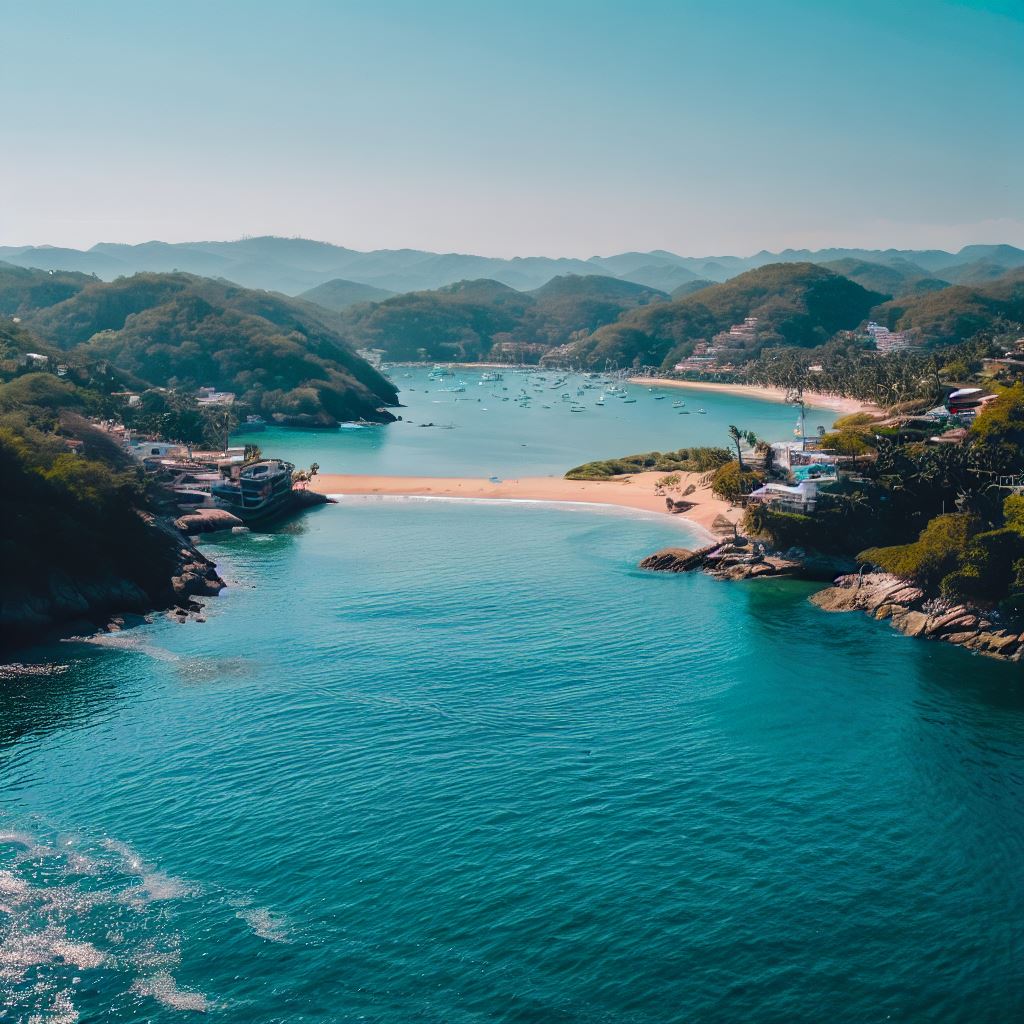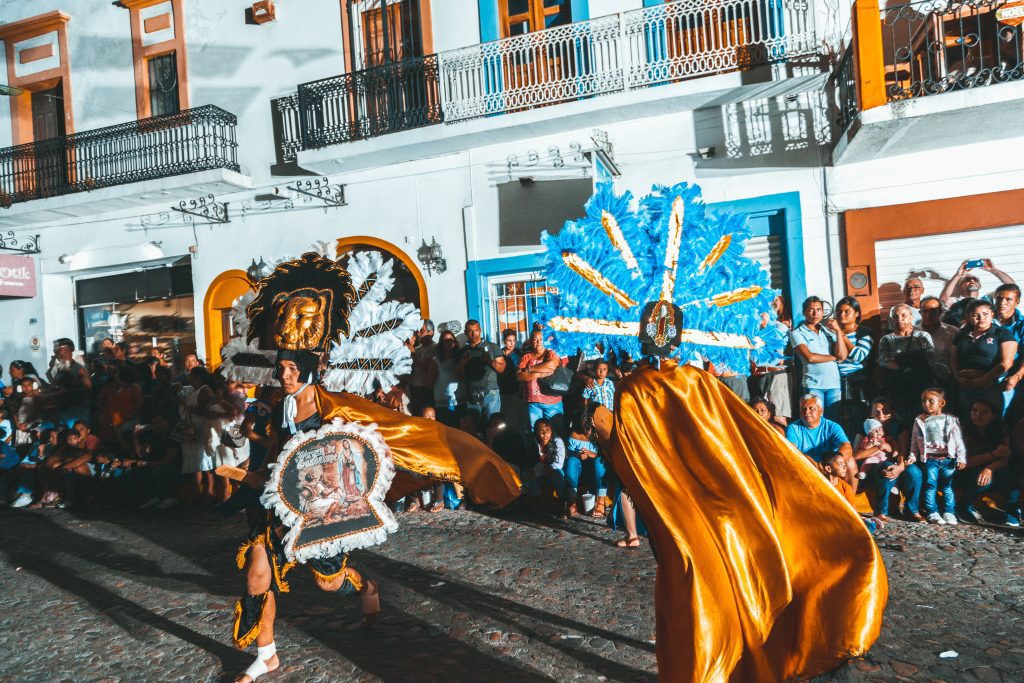Introduction
Nestled on the picturesque Pacific coast of Mexico, the vibrant tourist development of Huatulco, formally known as Bahías de Huatulco history, offers travelers an enchanting blend of natural beauty, rich history, and a taste of authentic Mexican culture. In this article, we will take you on a journey through the captivating town of La Crucecita and its surroundings, unveiling the fascinating history, diverse geography, delectable gastronomy, and much more that this hidden gem has to offer.
Thank you for reading this post, don't forget to subscribe!
Bahias de Huatulco History
Huatulco’s history is steeped in legends and tales of ancient civilizations. Some say that the Toltecs and the mythical Quetzalcoatl once graced these lands, leaving behind their indelible mark. Over the centuries, various cultures, including the Chatmos, the Zapotecs, and the Mexicas, passed through this region, each contributing to the vibrant tapestry of Huatulco’s heritage.
After the Spanish Conquest, Huatulco transformed into a thriving port under the control of Hernán Cortés, serving as a strategic vantage point for Spanish galleons and a crucial distribution center for supplies along the Pacific coast. The town’s history also bears the marks of famous English pirates such as Francis Drake and Thomas Cavendish, who once sailed these waters.
Until the 1980s, Huatulco remained relatively unknown, its primary claim to fame being its lush coffee plantations. However, in 1984, the Mexican government’s tourism development agency, FONATUR, acquired vast stretches of land to transform the area into a bustling tourist center, akin to Cancún. This ambitious plan led to significant improvements in infrastructure and a harmonious coexistence between populated areas and “green zones,” fostering an environmentally friendly atmosphere.
Today, Huatulco maintains its small-town charm, offering a respite from the hustle and bustle of more crowded tourist destinations. Approximately 80% of its tourism is domestic, with the remainder coming from international travelers.
In 2006, Huatulco earned UNESCO Biosphere Reserve status, further highlighting its commitment to preserving its natural wonders.

Geography
Huatulco’s geography is nothing short of breathtaking. Situated at the convergence of the Sierra Madre del Sur mountains and the Pacific Ocean, it boasts a unique topographical blend. The region is divided into four main districts: Tangolunda, Santa Cruz, La Crucecita, and Chahué.
The crown jewel of Huatulco’s geography is its nine bays and numerous coves, stretching across 26 kilometers of rugged coastline, featuring 36 pristine, white sandy beaches. Bahía de Santa Cruz stands at the center of the action, serving as a hub for commercial and tourist activities, including cruise ship docking, hotels, craft shops, bars, and restaurants. The iconic Capilla de Santa Cruz, perched near the sea, hosts weddings and baptisms, adding a touch of enchantment to the bay.
To the east of Santa Cruz, Bahía Chahué, Bahía Tangolunda, and Bahía Conejos beckon visitors with their upscale offerings. Bahía Chahué, known for its marina and three principal beaches, provides a more secluded experience due to its moderate surf. Bahía Tangolunda boasts five beaches and is home to many larger hotels, while Residencial Conejos features spacious vacation rentals. The easternmost point, Bahía Conejos, leads to a stretch of remote beaches, including Barra de la Cruz and Playa Mojon, perfect for surfing enthusiasts.
On the western side, the beaches remain less developed and fall within the protected Parque Nacional Huatulco, a haven for biodiversity, including vibrant coral communities. Bahía San Agustín, the furthest west, offers a spacious expanse of beach and small islets.
Gastronomy
Huatulco’s culinary scene is a delightful fusion of seafood and traditional Mexican flavors. Visitors can savor a wide variety of local dishes, including tlayuda (a traditional Oaxacan snack), mole Oaxaqueño, cecina (thinly sliced, marinated meat), and even the exotic chapulines (edible insects). Local seafood is readily available on most nearby beaches, with La Entrega and Maguey being popular spots to indulge in fresh catches of the day. In the heart of La Crucecita and the downtown area, you’ll find a myriad of local restaurants serving up these delectable treats.
Education
Huatulco is not just a destination for leisure; it’s also home to the Universidad del Mar, which has its campus in the town. This institution enriches the area with educational opportunities and contributes to the town’s intellectual vitality.
Bocana del Río Copalita
For history buffs and explorers, the Bocana del Río Copalita offers a captivating journey back in time. This archaeological site, dating back 2,500 years, sits approximately ten kilometers from the bays and is open to the public. Its name, “place of copal,” hints at its significance in the region’s ancient dominions. Visitors can explore landmarks such as the main temple, a temple dedicated to a serpent god, a Mesoamerican ball court, and an informative site museum.
Climate
Huatulco enjoys an enviable climate, with sunshine gracing the region for about 330 days a year. The average temperature hovers around a balmy 28°C (82.4°F). The dry season, extending from December to May, transforms the landscape into shades of brown, while the rainy season, from June to November, paints it in lush green hues.
Coffee Plantations
Before the tourist boom, Huatulco was renowned for its coffee plantations, and some of them are still in operation today. Visitors can embark on tours of coffee farms such as Finca Las Nieves, Finca Monte Carlos, Finca Margaritas, Finca El Pacífico, and Finca La Gloria. Finca El Pacífico stands out for its production of organic coffee known as “Pluma Hidalgo.” These coffee plantations are often surrounded by picturesque waterfalls and ravines, providing a serene setting for coffee enthusiasts.
Festival
Huatulco embraces culture and environmental awareness with the Festival Música por la Tierra (Music Festival for the Earth). This annual event features a lineup of rock and popular music groups, aiming to raise awareness about environmental issues and celebrate the beauty of nature.

Transportation
While Huatulco’s beauty is undeniable, reaching this paradise requires some effort. Unlike more accessible tourist destinations like Cancun, Huatulco’s transportation options present challenges. The journey from Acapulco involves navigating over 300 speed bumps on Federal Highway 200. Traveling from Oaxaca city along Federal Highway 175 offers no respite, as it, too, is laden with speed bumps. Federal Highway 190 offers a smoother ride, but its winding path through mountainous terrain extends the travel time.
However, Huatulco has its own international airport, the Bahías de Huatulco International Airport, served by both domestic and international carriers. The airport has played a pivotal role in increasing tourism not only in Huatulco but also in nearby destinations like Mazunte and Zipolite, making Oaxaca’s Pacific Coast an increasingly popular choice for travelers.
Conclusion
Bahais de Huatulco, with its rich history, diverse geography, tantalizing cuisine, and commitment to sustainability, stands as a testament to the allure of Mexico’s Pacific coast. Whether you seek adventure, relaxation, or a deeper connection with nature, this hidden gem offers a unique experience that will leave you with lasting memories and a longing to return to its enchanting shores. Huatulco truly is a destination that encapsulates the very essence of Mexico’s charm and beauty.



F.A.Q. – Everything You Need to Know About Huatulco
Question 1. What is Huatulco, and where is it located?
A.: Huatulco, officially known as Bahías de Huatulco, is a tourist development located on the Pacific coast of Mexico, specifically in the state of Oaxaca. It is centered around the town of La Crucecita and is known for its stunning nine bays and beautiful coastline.
Question 2. Can you tell me about the history of Huatulco?
A.: Huatulco has a rich history with legends suggesting that it was visited by ancient civilizations like the Toltecs and Quetzalcoatl. After the Spanish Conquest, it thrived as a port under Hernán Cortés’s control, serving as a strategic point for Spanish galleons. The town also has a history of encounters with famous pirates like Francis Drake and Thomas Cavendish. In the1980s, it underwent significant resort development, transforming it into a popular tourist destination.
Question 3. What is the geography of Huatulco like?
A.: Huatulco’s geography is breathtaking, with its location where the Sierra Madre del Sur mountains meet the Pacific Ocean. It boasts nine bays and numerous coves along 26 kilometers of coastline, offering 36 pristine beaches. The main bay, Bahía de Santa Cruz, is at the heart of the town and features commercial and tourist activities.
Question 4. What types of accommodations are available in Huatulco?
A.: Huatulco offers a wide variety of accommodations to suit different preferences and budgets. Visitors can find everything from rooms for rent, small economy hotels, luxury villas, vacation condominia, bed and breakfasts, to upscale resorts situated along or near Tangolunda Bay.
Question 5. What are the popular attractions and activities in Huatulco?
A.: Huatulco offers a range of attractions and activities, including relaxing on its beautiful beaches, exploring the historical Bocana del Río Copalita archaeological site, enjoying the local gastronomy, visiting coffee plantations, and participating in cultural events like the Festival Música por la Tierra. Outdoor enthusiasts can also indulge in activities like scuba diving, snorkeling, hiking, and surfing.
Question 6. Tell me more about Huatulco’s gastronomy.
A.: Huatulco boasts a diverse culinary scene with a focus on seafood and traditional Mexican dishes. Some must-try items include tlayuda (a traditional Oaxacan snack), mole Oaxaqueño, cecina (thinly sliced marinated meat), and even the exotic chapulines (edible insects). You’ll find plenty of local seafood options, especially on beaches like La Entrega and Maguey, as well as numerous local restaurants in La Crucecita and the downtown area.
Question 7. Is there any educational institution in Huatulco?
A.: Yes, the Universidad del Mar has its campus in Huatulco, enriching the area with educational opportunities and contributing to its intellectual vitality.
Question 8. What is the Bocana del Río Copalita, and can visitors explore it?
A.: The Bocana del Río Copalita is an archaeological site that dates back 2,500 years, located about ten kilometers from the bays. It is open to the public and covers an area of about thirty-five hectares. Visitors can explore landmarks such as a main temple, a temple dedicated to a serpent god, a Mesoamerican ball court, and a site museum.
Question 9. What is the climate like in Huatulco?
A.: Huatulco enjoys a pleasant climate with approximately 330 days of sunshine each year. The average temperature is around 28°C (82.4°F). There is a dry season from December to May and a rainy season from June to November, which significantly affects the local vegetation.
Question 10. Are there coffee plantations in Huatulco, and can visitors tour them?
A.: Yes, there are several coffee plantations in Huatulco, including Finca Las Nieves, Finca Monte Carlos, Finca Margaritas, Finca El Pacífico, and Finca La Gloria. Visitors can take tours of these plantations, with Finca El Pacífico known for producing organic coffee called “Pluma Hidalgo.” The plantations often offer a serene setting, surrounded by waterfalls and ravines.
Question 11. Tell me about the Festival Música por la Tierra. What is its purpose?
A.: The Festival Música por la Tierra (Music Festival for the Earth) is an event designed to raise awareness about environmental issues. It features a lineup of rock and popular music groups, combining music and culture to promote environmental consciousness.
Question 12. How can travelers reach Huatulco?
A.: Traveling to Huatulco can be done by road or air. While the roads have seen improvements, some routes can be challenging due to speed bumps and winding terrain. Huatulco has its international airport, the Bahías de Huatulco International Airport, served by domestic and international airlines, making it a convenient choice for travelers.
Now that you have answers to these frequently asked questions, you’re well-equipped to plan your visit to the beautiful destination of Huatulco, Mexico. Enjoy your journey to this hidden gem on the Pacific coast!
